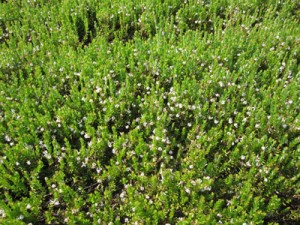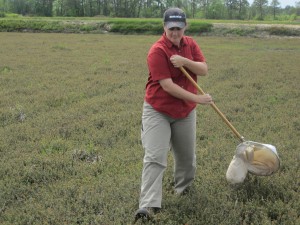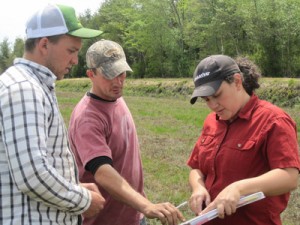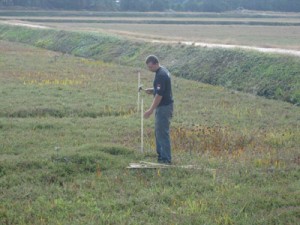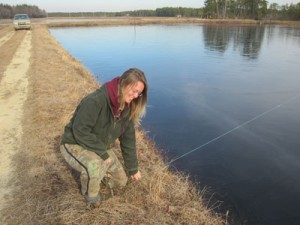Last week, several team members attended the American Cranberry Growers Association’s annual winter meeting. The ACGA winter meeting is always a good opportunity for growers and scientists to listen to research findings from experiments during the previous growing season and the researchers’ recommendations for the 2013 growing season. This year, Pine Island sent new team members Kylie Naylor and Matt Giberson, as well as our CEO Bill Haines, general manager Fred Torres and PIICM manager Cristina Tassone. Everyone from Pine Island who attended (both the newer and the more experienced) were able to take a lot away from the experience.
For general manager Fred Torres, the opportunity to speak with other growers is invaluable. “When you work somewhere for a long time, you’re always learning. Bill Sr always said, ‘You learn something new every day’, and that’s true. But when you sit down and talk with other people about what you do and how you do it–the water, the weather–you realize how much you actually do know,” he says. “It’s a good refresher.” And he likes to hear from the experts. “Even when it’s something we’ve been working on with the research center,” he says, “you can pick up a lot from the questions other people ask.”
PIICM manager Cristina Tassone agrees. “For our new people to start asking questions, that’s what’s really great. I love that we have team members willing to ask questions, who can figure out ways to make the research relevant to us and apply it to our own operation.”
Cristina also really likes hearing from people in Massachusetts and Wisconsin. “It’s good to hear what works and what doesn’t in other areas,” she says, “and a lot of it can reinforce why we make the decisions that we make.” She also likes hearing from different speakers and other growers and how they apply theoretical knowledge to real-life situations. “The winter meeting is especially good for mingling,” she says. One of the presenters this year brought a demo of some new database software that some Massachusetts growers are trying, and several growers in New Jersey have long been interested in trying out different database systems so that we were all compatible. Our team will be starting to use iPads in the field this year in order to better track crop data; finding good database software will help us improve our efficiency even further.
Newer team member Matt Giberson was also interested in the software possibilities. “Just being able to update in the field and store it at the office will really save us time,” he says.
He was highly intrigued by the research on new varieties as well. “That will be interesting to see how they shake out ten years from now. It’s kind of cool to be there at the beginning, to know you can compare and contrast something like Demoranville to the Early Blacks. Yield, rot resistance, all that stuff.” He was interested to hear about the research on holding late water in Massachusetts (the practice of withdrawing the winter flood in March then re-flooding the bog in later April for one month) though he doesn’t think it would work here.
PIICM supervisor Kylie Naylor agreed, but found the process fascinating as well. “I came in at the end of harvest, so really I’m just learning about the entire harvest year from scratch,” she says. “So I found a lot of the information really helpful, even as an outline.” She was especially interested in the presentation on heat and applying water to the cranberry canopy, as well as the research on fruit rot resistance. “It was a really good preview of the kind of things I can expect.” Since she came on board after the summer meeting, it was also a good chance for her to get the visual for the practical research at the Marucci Center. She also liked the talk on safety, having done her senior seminar on AgrAbility and modifying tractors to make them easier for older farmers to use.
Overall, the Pine Island team largely agrees with Cristina’s take: “We’re always tweaking our crop management: the varieties, the water management, irrigation, cooling…the more we understand, the better decisions we can make.”

